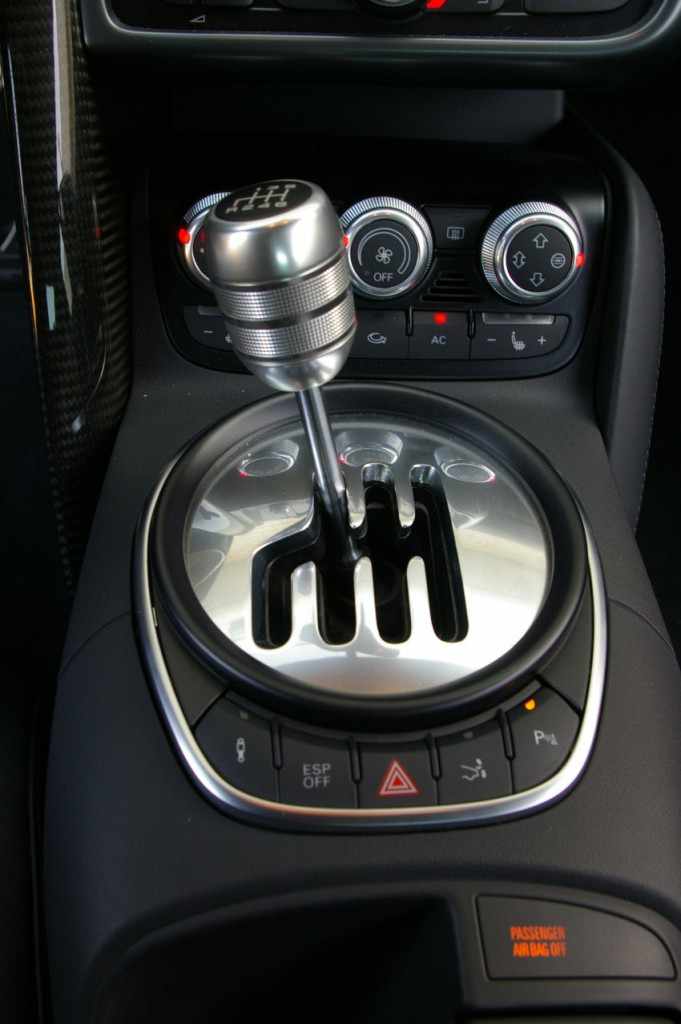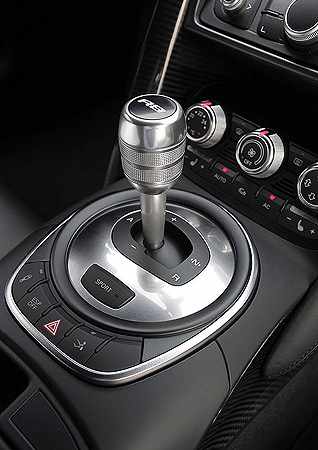

I have a confession to make; I just don’t get it! I have tried to understand, I have test-driven the vehicles and, for the life of me, I can see no advantage to manually shifting an automatic transmission. I was enraged by salesmen frothing on about how some transmission can be worked in “manual mode”. Why? Who cares? Not me. I can use a manual and there is a huge difference between changing gears yourself and waiting for the car to respond to your request for a gear change.
All this is about to change, however, and I may soon get the convenience of driving an automatic transmission with the effectiveness of a traditional manual gearbox. There are two reasons for this. The first is the development of new generation automatic transmissions and the second is the application of motorcycle technology to automobiles. Follow me after the jump.
First, we will look at the evolution of the automatic transmission. It has always been slow to shift because it does not use a clutch, it uses a torque converter, which is designed to shift smoothly as apposed to quickly. An automatic transmission progressively engages Drive to eliminate sudden shock to the drivetrain and the adverse effects that could have. like locking up the drive wheels (downshift) or spinning the tires and losing control (rapid acceleration). Now that we have computer controlled throttles, (fly by wire technology like jet fighters) the computers can operate the throttle and transmission in harmony. This has given design engineers wonderful new possibilities for building automatic transmissions that the driver can control. The new Jaguar XK, Aston Martin DB9 and Maserati GrandTurismo all use this new technology.
The next piece of technology we will discuss is the sequential gearbox. Long used in motorcycles and expensive racecars, the sequential gearbox differs from a traditional manual gearbox in that it requires you pass through every gear going up and down. That is why it is called sequential; it must be used in sequence. They are lighter and in some ways simpler than our “H pattern” manuals but are more difficult to use as we can only select the next gear, not the gear we need. Those of you who have ridden a motorcycle will understand this. Some years ago, the brains of Formula 1 (they have big brains) decided they could save their valuable and delicate engines by taking the risk of missed shifts away from their drivers. Using computer controlled electro-hydraulic actuators they devised a method of controlling gear selection, using sequential gearboxes, that prevented the driver from accidentally engaging the next gear when the resultant engine rpm would exceed the red-line of the engine and lead to a catastrophic, but spectacular engine failure. As a benefit of this technology, they also discovered that they could program the computers to shift quicker that even the best and most skilled of drivers. This technology is now universal in Formula 1 and most advanced sports-prototype racecars like the Audi R10 and Porsche Spyder.
The first time I used this type of technology was when BMW introduced the M3 SMG (sequential manual gearbox) it was phenomenal. No need to “Heel & Toe” your downshifts to match revs, the computer did this for you. I even tested it while braking hard into a corner, to see if it would make the car unstable while downshifting, the machine just worked, better than I could, I humbly admit. The downside of this was that up-shifts were brutal; you could feel the shock as the computer engaged the clutch, a little lift on the throttle eased the shock quite a bit but you still could feel it. This is good technology for a racecar, but not for a road car. I felt I would soon tire driving the car in traffic.
The second example of this technology I drove was the Audi A3. Audi did something different to the standard sequential gearbox. They added another idler shaft and another clutch. Now, when you change gears one clutch would release as the second engaged. This resulted in much smoother and quicker gear changes. The unit is more complex and a bit heavier than the traditional units but the weight is not that important in a road car and the resultant reduction in shock-loading the drive train makes it more reliable. The new Porsche 911 uses this technology (Porsche call theirs PDK), thus relegating the much-maligned “Tiptronic” automatic transmission to the history books. You can now buy a Porsche and enjoy the thrill and performance of driving a racecar on the open road and the ease of driving an automatic in town. The great little Golf GTI offers a version of this transmission as well.
Purists will still prefer the manual gearbox and I will not be criticizing them for that, I love to change gears myself and still drive a manual gearbox, although frustrating at times in city traffic. However, you cannot ignore that technology has advanced the functionality, performance and convenience of driving. Whether you choose an automatic, with manual capabilities or a manual with automatic capabilities we now have the option of “having our cake and eating too”.
